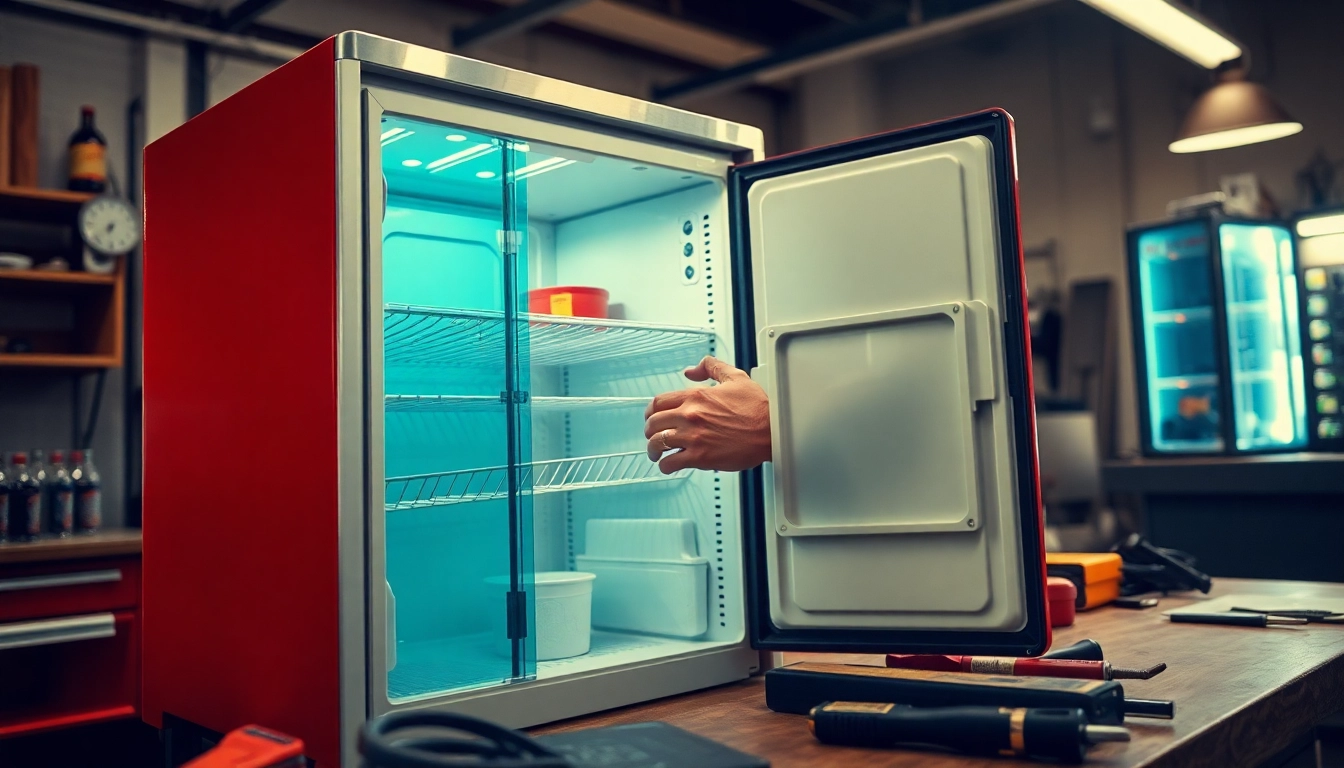Essential Guide to Soda Cooler Repair: Troubleshooting and Maintenance Tips
Soda coolers are an essential part of commercial and residential beverage storage, designed to keep drinks chilled and easily accessible. However, understanding the components and common issues associated with soda coolers can significantly enhance your ability to maintain and repair them. In this guide, we will delve into the anatomy of soda coolers, explore frequent problems faced by users, and provide effective diagnostic techniques. A soda cooler typically consists of several key components: Users frequently encounter a number of problems. Here are the most common issues: To effectively diagnose the problems with your soda cooler, consider the following steps: Understanding how to repair your soda cooler can save you time and money. With the right tools and guidance, many issues can be resolved without professional help. The following sections will cover essential tools, a step-by-step repair guide, and when it’s appropriate to call in an expert. Before starting any repair, assemble the following tools: Here’s a concise guide on how to tackle some basic repairs: While many repairs can be addressed DIY-style, certain situations necessitate professional intervention. If your soda cooler has electrical problems, such as frequent tripping of the power supply or if the compressor fails to start even after troubleshooting, soda cooler repair experts should handle the situation to avoid any further damage. Additionally, sealed system failures often require licensed technicians to safely repair, as these involve handling refrigerants. Regular maintenance is crucial for extending the lifespan of your soda cooler. Implementing simple practices can prevent common issues and ensure optimal performance. Keep your soda cooler clean to promote efficiency: Incorporating preventive strategies can significantly mitigate problems: Typically, soda coolers have a lifespan of 10 to 15 years. Factors such as usage frequency, maintenance care, and environment can influence this duration. It’s also worth noting when to update your cooler. If it frequently requires repairs or is unable to maintain the desired temperature, it may be more cost-effective to invest in a newer, energy-efficient model. Understanding the costs associated with repair and maintenance can help in budgeting effectively for your soda cooler. Repair prices can vary significantly based on the nature of the issue: Incorporating regular maintenance into your budget is essential. Set aside a small percentage of what you would pay for damages in case of repairs to establish a maintenance fund. Regular routine care often saves more money in the long run than significant repairs. When considering whether to repair or replace your soda cooler, weigh these factors: There are several resources available to further assist you in maintaining and repairing your soda cooler: Consider working with reputable suppliers for replacement parts: Engaging with online communities can provide valuable insights: For more detailed guides, consider these resources:Understanding Your Soda Cooler
The Anatomy of Soda Coolers
Common Issues Faced by Soda Coolers
How to Diagnose Problems Effectively
DIY Soda Cooler Repair Techniques
Basic Tools Needed for Repairs
Step-by-Step Repair Guide
Fixing a Non-Cooling Unit
Addressing Excessive Noise
When to Call a Professional
Maintenance Tips for Long-term Performance
Regular Cleaning and Care
Preventive Measures Against Common Issues
Understanding Cooler Lifespan and Updates
Cost Considerations for Soda Cooler Repair
Typical Repair Costs and Parts Replacement
Budgeting for Routine Maintenance
Evaluating Repair vs. Replacement Costs
Additional Resources for Soda Cooler Owners
Recommended Parts Suppliers
Online Communities for Support
Further Reading and Video Tutorials


0 Comment